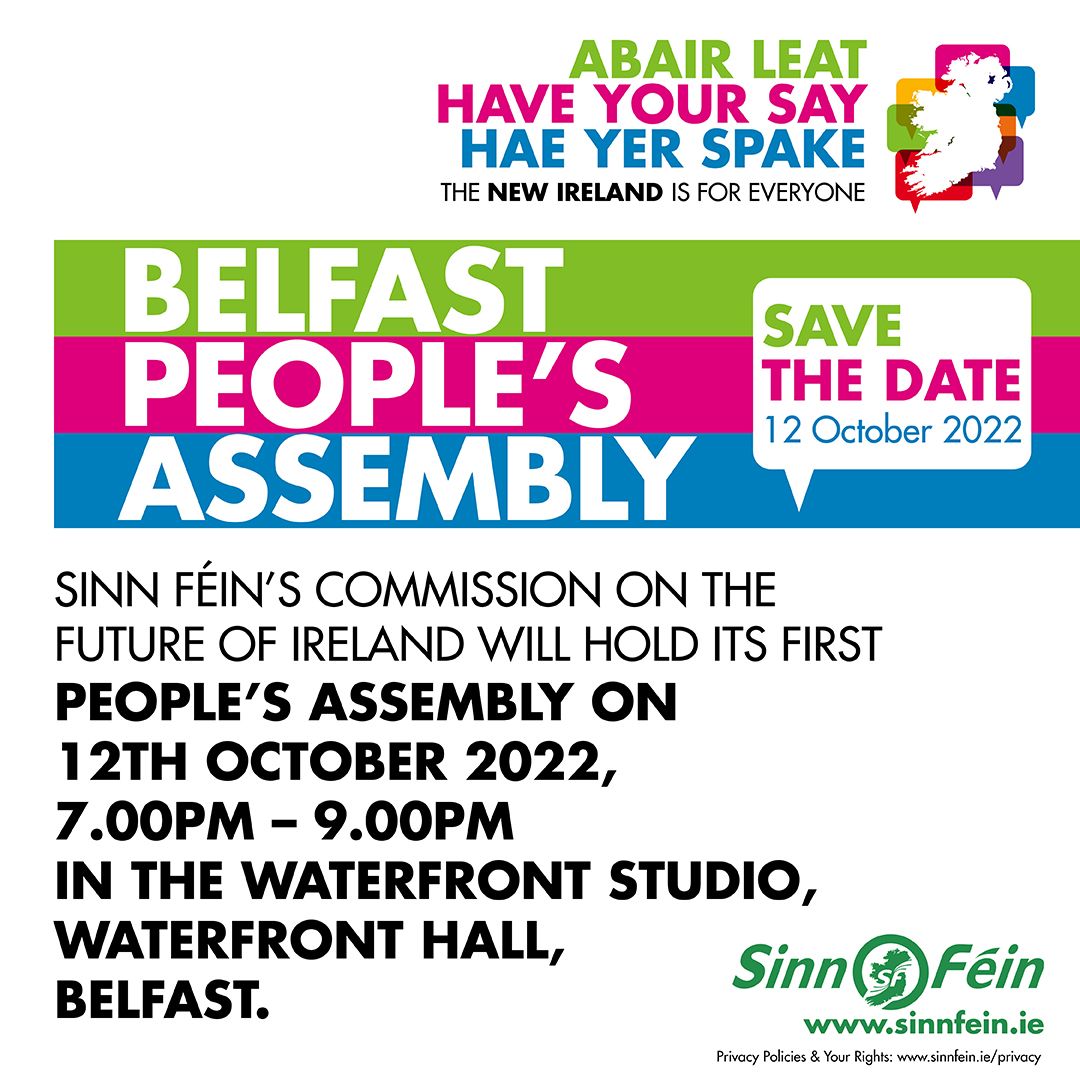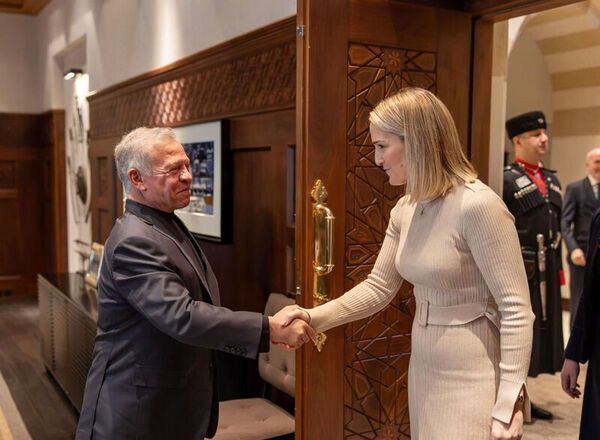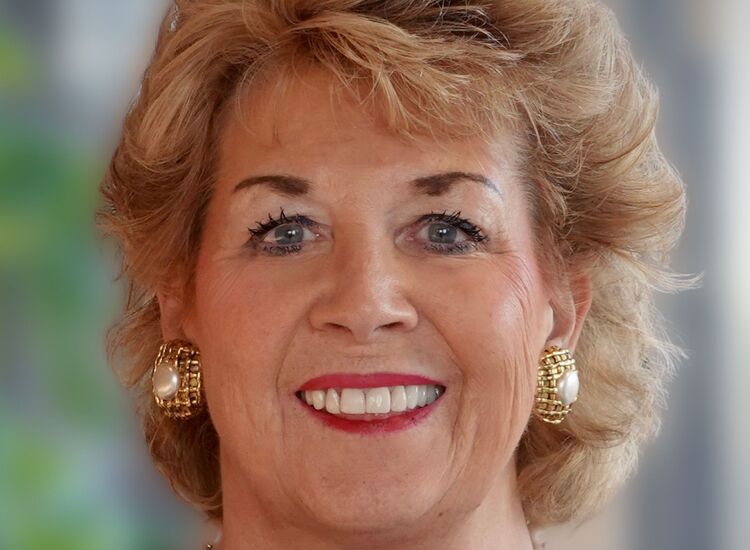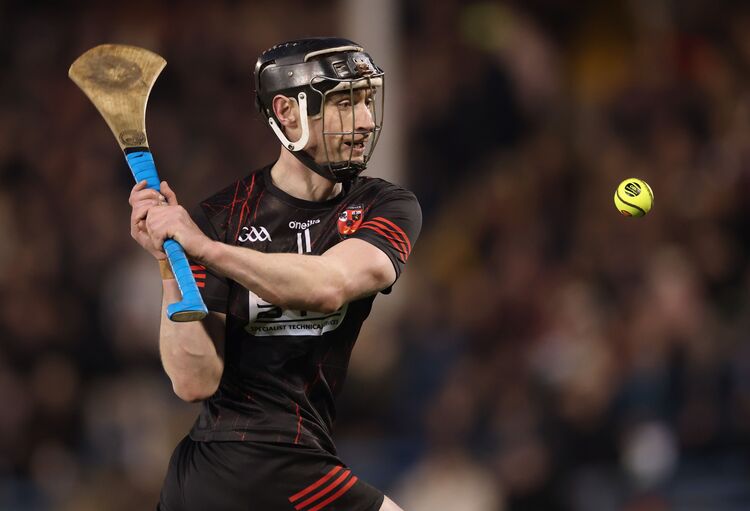Hardly a week passes now without politicians, bloggers and columnists writing about Irish unity and calling on the Dublin government to establish a Citizens’ Assembly to plan constitutional change. The number of books and informed academic publications examining and supporting constitutional change have also dramatically increased.
Under the banner "Together We Can" Ireland’s Future is busy promoting their major conference in the 3 Arena in Dublin on October 1. Their impressive line-up includes political and community leaders, artists, and international guests. The group also plans to launch a ‘vision document’ setting out their view of the future.
Last summer, Sinn Féin announced the setting up of a "Commission on the Future of Ireland." The Commission is a unique and ambitious initiative which includes a series of Peoples’ Assemblies under the broad slogan "The New Ireland is for Everyone – Have Your Say."
On October 12 - the inaugural first public meeting of the People’s Assembly will take place in Belfast’s Waterfront Hall between 7 and 9 p.m.
The Commission is extending an open invitation to all citizens and sections of society to submit their views on the future of Ireland. The opinions of those with alternative visions for the future are also welcome. There will also be Women’s Assemblies, Youth Assemblies and Assemblies in Gaeltacht areas. The intention is to widen the current conversation through public, sectoral, and private discussions.
The Commission will seek to engage with the protestant and unionist sections of our people. Our neighbors with a British identity, and the unionist, Protestant and loyalist members of our community are especially welcome to participate. If you would like to attend the Belfast Assembly you can register for it at www.eventbrite.ie
Submissions to the Commission on the Future of Ireland are open at www.sinnfein.ie/futureofireland

PRISON PRIVILEGES
On my occasional vacations at her majesty’s pleasure many of my comrades made mementos of their incarcerations from wood or leather as gifts for family or friends or for The Green Cross or An Cumann Cabhrach, the prisoner’s dependents support groups.
I rarely did any handicraft work. I lacked the skill sets required. In the beginning my artistic endeavors were limited to the production of handkerchiefs suitably adorned with pledges of everlasting love with appropriate symbols. All brightly colored with markers. Some were for birthdays, or anniversaries. Some were for children and were replete with cartoon characters. Mickey Mouse and Donald Duck were favorites. Other prisoners painted illustrated and defiant statements of revolutionary intent. Armalites featured alongside Tricolors and Starry Ploughs. Or drawings of our patriot dead.
Leather work was also popular. Purses and wallets. Belts. Handbags. Celtic art work adorned these. And the name of the recipient. I never did any leather work but by way of bribery or barter I did manage to gift Colette some lovely and fashionable accoutrements. Some fine craftsmen emerged, particularly from the cages of Long Kesh. The late Tom Cahill, despite injuries inflicted on him in a gun attack, was a particularly accomplished leather worker.
Woodwork, too, was the demesne of highly talented crafts men. Especially country men. That is anyone outside Belfast. They produced Harps and Celtic Crosses. Of all sizes. Some very large indeed. If I remember correctly there is a full size harp on display in Cumann na Meirleach - The Felons Club. Alongside a rocking chair. Spinning wheels were also very popular. I did a small Celtic cross once. I have it yet. I was unsure of how to reproduce the appropriate Celtic designs to adorn its panels.
An example of what might come from "prison privileges."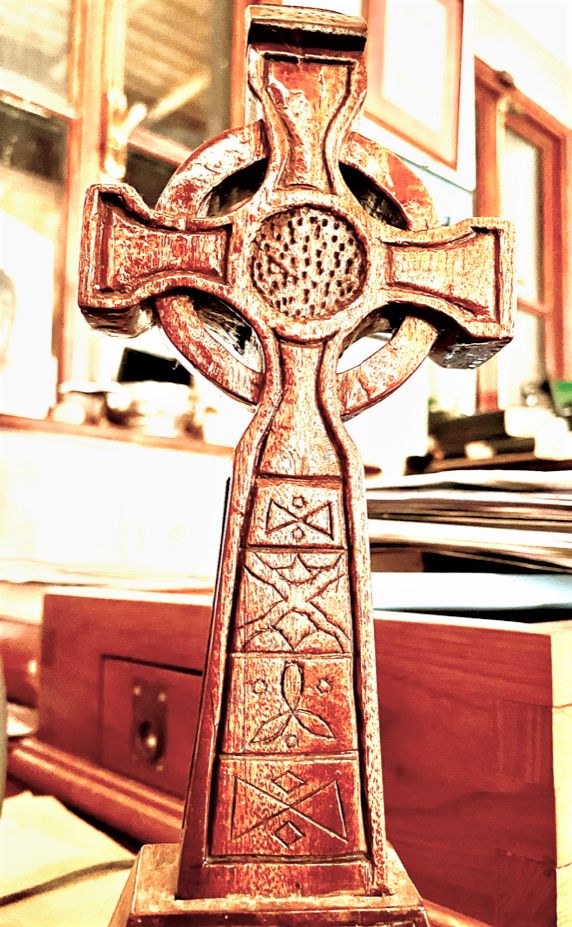
Ted persuaded me that he was an expert in fourth century Ogham symbols. He told me he had studied this ancient and primitive form of Irish writing. I was very gullible. I still am. And Ted is very persuasive.He still is. He drew the symbols free hand on my wee cross and I dutifully carved them out. They are very unique. I have carried that cross for Ireland and Ted since our sojourns in Cage Six fifty years ago.
Music boxes of all kinds, from little pianos to wooden hearts also emerged. All finely engraved with iconic romantic images, names and proper Celtic designs. Some had musical chimes which played when the box was opened. That’s why they are called music boxes I suppose. Some had plush interiors. They were lined with velvet of a suitably rich texture and color. I used to slip a wee note - This music box was made by Gerry Adams with the date - beneath the lining when the music box maker was otherwise engaged. I thought it would be funny decades later for someone to discover who really made their much treasured vanity set. .
Joe Rafter - Floorboards - specialized in making models of the Travelling people’s barrel shaped covered wagons. Other comrades produced plaques for all occasions. At times there were passing fads. For example lollipop sticks or match sticks were glued together to construct - yes you’ve guessed it- harps and crosses.
But these were never as popular as the wooden ones. I suppose it was easier to get wood. Match sticks or lollipop sticks were less available, particularly in the thousands that are needed to make a decent sized piece of craft. Occasionally, some enterprising folks would shape coins into Claddagh rings. I think Seanadóir Niall Ó Donnghaile has a Fáinne made by one of his imprisoned ancestors.
Once I got a very fine wooden garage made for our oldest lad. It was painted white and its signage was Adams And Son. There was a ramp going to the flat roofed car parking space for all his wee dinky cars. I was very proud of it. Someone stole it from outside our door down in Harrogate Street. Tom Hartley lived across from us. Number one suspect?
The oldest lad also got a wee wooden sword in its own scabbard and a wee belt. Now the oldest lad’s oldest lad has it. Although the handle is broken. But still. It is half a century old after all.
Under prison regulations handicraft work is described as a privilege. Sometimes privileges would be withdrawn by the prison regime. This usually caused uproar. During the blanket protests the men in the H Blocks were denied all of their privileges. The women in Armagh suffered similar sanctions.
There were also many fine artists among us. Pat Magee was very good. So too was Lucas Quiqley and his brother Tommy, and also Danny Devenney. On the Maidstone Prison Ship I was moved for a wee while to dabble in water colors. I am including my best piece here. Gerard Davidson was my mentor. This wee yoke lay rolled up in our attic for decades. It looks far better framed and on the wall, where it belongs. A reminder of The Maidstone. We forced them to close this prison ship down by the way. But that’s another story.
Tom Hartley is always on the look-out for prison handicrafts. A piece I gave him from Armagh Women’s Prison has pride of place in the Ulster Museum. It used to belong to the late Kathleen Thompson. The Armagh women sent it out to her in thanks for all her work on behalf of prisoners. Maybe you have some hidden treasures in your glory hole. Or on the top of the wardrobe. Or in the garage. Or in your Granny’s bottom drawer.
Have a look. You never know what you might find. These wee pieces of handicraft work are all part of our community, family and national history. They are a reminder of our penal history. And they helped some of us to do our whack.

